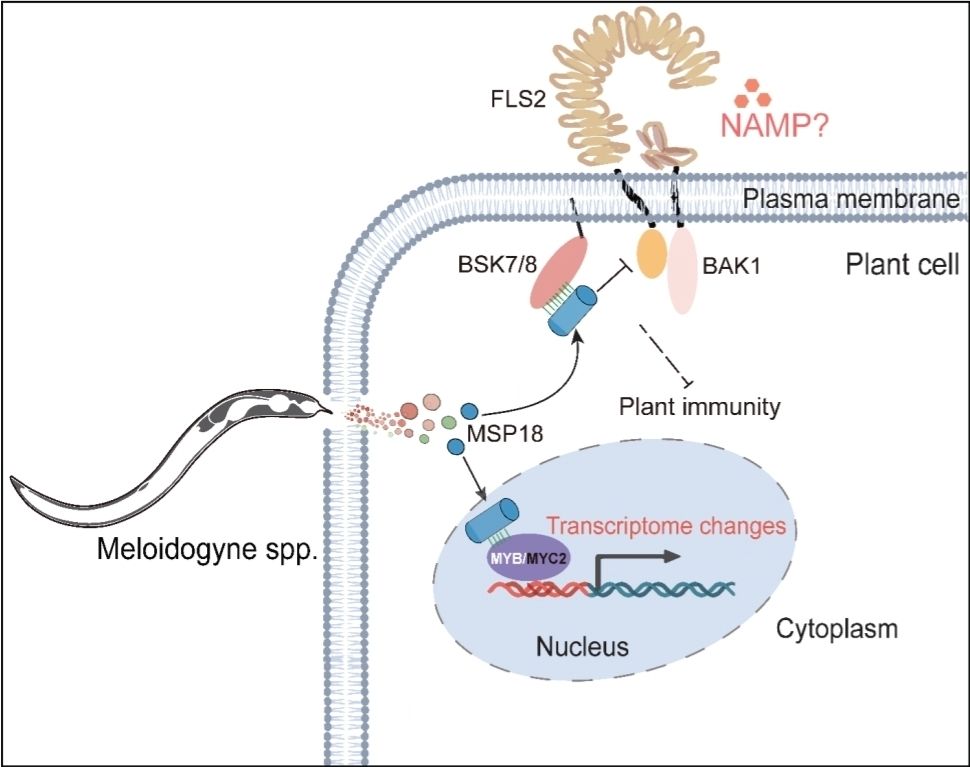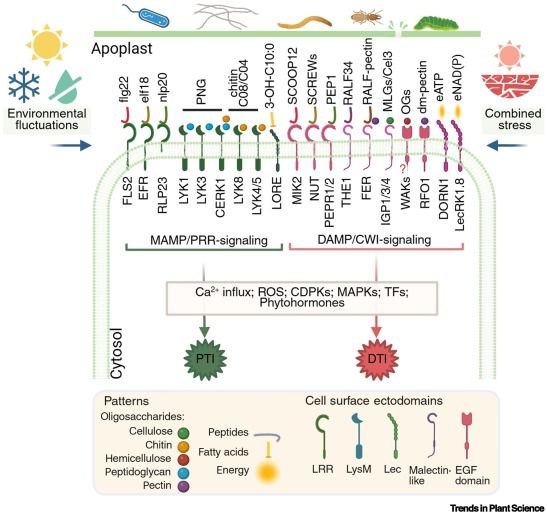
the top half shows two panels with microscopy images. Left is a light-microscopy image of a group of algal cells. The cells are round with different sizes. Two arrows point at sporangia: one looks as if someone stuffed 8 footballs in a thin elastic bag. The other is perfectly round and contains many small spores within. The right panel shows the same group of cells, but in fluorescent microscopy, where green color shows chloroplasts. In each cell the chloroplasts are globular with small lobes sticking out. The bottom half shows a photo of Xanthoria lichen - bright yellow and leafy growing on a tree branch
Our paper on the #genome of the Trebouxia #photobiont from Xanthoria is now out in @newphyt.bsky.social! Check below for a near-chromosome level assembly, secretome analysis, evidence of ancient HGT, and transcriptomic comparison of the alga in symbiosis and in pure culture
doi.org/10.1111/nph.70728
12.11.2025 15:45 — 👍 59 🔁 20 💬 1 📌 1

New paper led by @metalichen.bsky.social from our group presenting a chromosome-level assembly of the Trebouxia photobiont alga from the lichen Xanthoria parietina - a resource we hope will enable significant new insight into the symbiosis @newphyt.bsky.social doi.org/10.1111/nph....
12.11.2025 16:29 — 👍 37 🔁 14 💬 0 📌 0
Aktuelle Ausschreibungen
Aktuelle Ausschreibungen
My new Emmy Noether Group is recruiting!
🔬 Two PhD positions in plant pathogen evolution
🧬 Start: April 2026 (flexible)
📍 Dept. of Phytopathology & Plant Protection @rstam.bsky.social @uni-kiel.de
⏰ Apply by 15 Dec 2025
🔗 More info: www.uni-kiel.de/personal/de/...
Do get in touch or share 😊
03.11.2025 09:03 — 👍 52 🔁 58 💬 0 📌 3
5!
31.10.2025 02:08 — 👍 1 🔁 0 💬 0 📌 0

Spooky season has arrived! 👻
We held our annual Pumpkin Carving Competition at @thesainsburylab.bsky.social —vote for your favourite carve! 🎃🕯️
30.10.2025 11:15 — 👍 19 🔁 8 💬 8 📌 1
New pre-print from the team!
The manuscript is @emma-raven.bsky.social's PhD work showing that whether a leaf is a carbon sink or a carbon source influences how they execute immune responses.
Have a read!
#PlantScience
@johninnescentre.bsky.social
14.10.2025 07:16 — 👍 78 🔁 53 💬 0 📌 0

Sophien Kamoun, the Google DeepMind team and Nick Desnoyer are pictured inside one of The Sainsbury Laboratory’s growth chambers, surrounded by growing plants.

Nick Desnoyer is pictured showing the Google DeepMind team growing plants inside one of The Sainsbury Laboratory’s growth chambers.

The Google DeepMind team alongside The Sainsbury Laboratory group leaders, GetGenome lead James Canham and members of the Kamoun group.
Fantastic hosting the @GoogleDeepMind team at TSL with @kamounlab.bsky.social 🌱
From AI in plant health to building scientific capacity, our missions clearly resonate!
Tools like AlphaFold can accelerate scientific breakthroughs in our field -holding real promise for global food security 🌍
16.10.2025 14:01 — 👍 17 🔁 8 💬 0 📌 1

Huge congratulations to PhD students @lenaknorr.bsky.social, from the Ma group, and @amiralito.bsky.social, from the @kamounlab.bsky.social, for their 2025 ASM poster awards! 🎉🌱
10.10.2025 14:57 — 👍 27 🔁 6 💬 0 📌 1
The sequences of 91,366 NLR immune proteins from 230 superasterid genomes are now printed in 931 bound volumes #OpenScience #OpenPlantNLR
14.09.2025 13:11 — 👍 19 🔁 4 💬 1 📌 0

Nick Talbot, Executive Director and senior group leader at TSL, is pictured in a glasshouse surrounded by rice plants.
We are pleased to announce that @talbotlabtsl.bsky.social has been awarded the RKS Wood Prize 2026 by the @bspp.bsky.social.
“I am humbled to have been awarded the RKS Wood Prize 2026. I’d like to thank my research group and my TSL colleagues for their inspiration and support.”
buff.ly/VvoR27Q
10.09.2025 14:31 — 👍 37 🔁 13 💬 2 📌 1
Validate User
Our latest work on how chloroplasts contribute to immunity: Membrane contact sites between chloroplasts and the pathogen interface underpin plant focal immune responses url: academic.oup.com/plcell/artic...
06.09.2025 17:36 — 👍 28 🔁 17 💬 1 📌 1

Thrilled to share our new bioRxiv preprint!✨ Huge credit to first author Yujin Chen and thanks to all co-authors. Extra special: my first paper as co-corresponding author (with Lieve Gheysen).
Check how nematodes uncouple FLS2–BSK signalling in 🌱👇
www.biorxiv.org/content/10.1...
01.09.2025 09:53 — 👍 17 🔁 9 💬 1 📌 1
First a pentamer, then a hexamer… now an octamer!
The riddle of the enigmatic CCG10-NLR immune receptor family cracked open 🔥
Congrats Guanghao @GuanghaoGuo He Zhang @mhz1989 Selva @M__Selvaraj et al.
#NLRbiology #plantsci #immunology
28.08.2025 12:05 — 👍 44 🔁 25 💬 1 📌 1

Carton says “eggs from plants”
Embyophytes what’s up
#iamabotanist
29.08.2025 00:20 — 👍 32 🔁 10 💬 1 📌 2
"Little Flower"
A Cryo-SEM portrait of my micro-rose depicting the flower as a sculpture of cells, fractured and frozen in time. Full image is 10k x 10k pixels.
19.08.2025 14:04 — 👍 43 🔁 12 💬 0 📌 1
Thank you @newphyt.bsky.social for organizing this great meeting. Met some very cool people and had constructive discussions! I presented our most recent work, now published in New Phytologist. You can check out my poster here:
doi.org/10.5281/zeno...
07.08.2025 15:38 — 👍 3 🔁 1 💬 1 📌 0
Researcher at the John Innes Centre searching for wheat resistance to Fusarium Head Blight
British-Nepali 🇳🇵(she/her)
Postdoctoral researcher at Pollmann's lab (CBGP, Madrid)
Plant-microbe interactions 🌱🍄🦠
Ph D scholar at BRIC-NIPGR #INSPIRE Fellow
Molecular Plant -Microbe/ Pathogen interaction,Calcium Signalling, Plant Immunity,Auxin Signaling, Effectors, PPIs, Arabidopsis, Wheat, Defense Physiology, Rhizosphere, Transcriptomics
#Views Personal #She/Her🧑🔬🌾🦠
Postdoc in starch at the John Innes Centre 🥔
PhD from the Plant Science Lab at Cranfield University 🥭
Postdoctoral Researcher @Cambridge University, Dad of a beautiful daughter.
Incoming Emmy Noether Group Leader @CAU - Plants | Microbes | Genetics
Steel town kid gone west.
Development, plants, resilience and flexibility.
https://stomata.stanford.edu/
Proteomics | Xanthomonas-Cabbage interactions | University of Amsterdam
Evolutionary biochemist and protein complex enthusiast at the University of Marburg.
🔬🧪🤔 PostDoc at @oxfordbiology.bsky.social | PhD @GBF_Lab @lrsv-toulouse.bsky.social
🔬 Postdoc at John Innes Centre, Norwich (Sablowski group) | 🌱 Cell size regulation
🧬 PhD in Lieve Gheysen’s lab, Ghent University | Nematode effectors & plant immunity
Plant Geneticist + Synthetic Biologist | Plant Immunity | UC Berkeley Postdoc | UIUC PhD | To make the world better with plant science
USDA NIFA Postdoctoral Fellow @UMass
Plant Genome Evolution | Grasses
PhD student @LRSV, Toulouse. Working on CLE peptides and AMS
We're an independent charity connecting people of all ages and backgrounds with science.
📺 Home of the #XmasLectures
💥 Weekly science talks online/in person
🌐 rigb.org
evolutionary biologist (phylogenetic network methods, plant systematics) | postdoc @ University of Washington | PhD from University of Wisconsin-Madison | 🏃🏻♀️✨🌈🌻🧬 she/her
Post doc @slcuplants.bsky.social |PhD @istareasearch| Alumna @SantAnnaPisa
Powered by plants 🌱 and dancing 💃🏻
Postdoc Associate at University of Oxford, currently studying mitochondrial dynamics in plant development
Also on the bird app
























